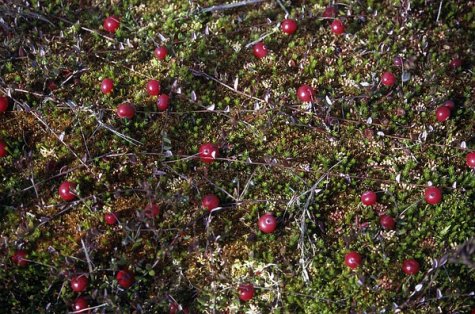Little red boy in bog ...
Photo: Arne Ader
Translation: Liis
Cranberries
Cranberry Harilik jõhvikas Oxycoccus palustris
... hanging on to the tussock by a horse hair. The stalk joining the berry and the plant is like a hair in a horse’s tail. The folk name – kuremari, crane berry, hints at cranes too inhabiting the cranberry bogs and marshes. So names come about.
The cranberry plant is a dwarf shrub with lignified stems and small, glossy, evergreen lance-shaped leaves. Cranberries picked in the first half of September that are partly white and ripen at home have an inferior taste and less nutritional value. Berries in October that have been exposed to frost in turn keep less well. So the right moment for picking the “vitamin bombs“ is now, enjoying the ancient landscapes of the cranberry bogs and mires in the beautiful autumn weather.
There are enough cranberries for all pickers this year. It is worthwhile to look for them in transition mires and the outskirts of bogs.
*
The title hints at a folk riddle: "Punane poisike soos, jõhvipidi mätta küljes" - Little red boy in bog, hanging by horsetail hair to the tussock. The answer: a cranberry. "Jõhv" is the Estonian word for a horsetail hair; so "jõhvikas" - horsetail hair berry.









